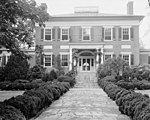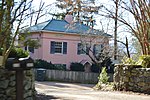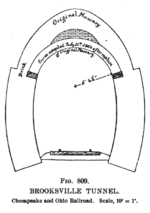Greenwood–Afton Rural Historic District
Albemarle County, Virginia Registered Historic Place stubsHistoric districts in Albemarle County, VirginiaHistoric districts on the National Register of Historic Places in VirginiaNRHP infobox with nocatNational Register of Historic Places in Albemarle County, Virginia ... and 1 more
Use mdy dates from August 2023

Greenwood–Afton Rural Historic District is a national historic district located at Greenwood, Albemarle County, Virginia. The district encompasses 839 contributing buildings, 55 contributing sites, 68 contributing structures, and 2 contributing objects. The district is characterized by large farms, historic villages, and crossroads communities. Ten properties are separately listed on the National Register of Historic Places.It was added to the National Register of Historic Places in 2011, and enlarged by the addition of two properties in 2016.
Excerpt from the Wikipedia article Greenwood–Afton Rural Historic District (License: CC BY-SA 3.0, Authors, Images).Greenwood–Afton Rural Historic District
Dinwiddie Way,
Geographical coordinates (GPS) Address Nearby Places Show on map
Geographical coordinates (GPS)
| Latitude | Longitude |
|---|---|
| N 38.055833333333 ° | E -78.77 ° |
Address
Dinwiddie Way 7789
22943
Virginia, United States
Open on Google Maps










